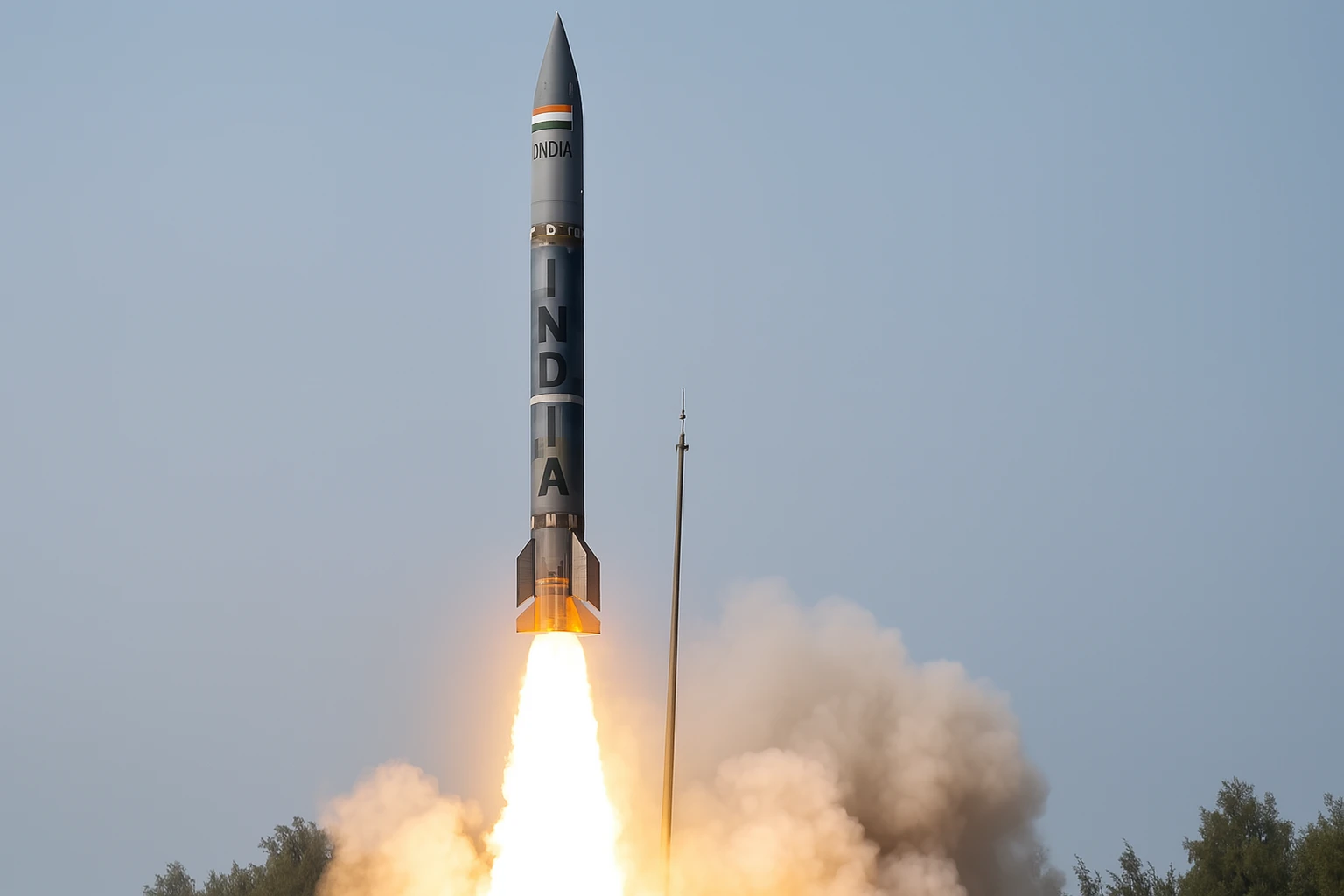There are moments in a nation’s defence evolution that may not dominate headlines, but quietly change everything. In July 2025, the Pralay missile trials quietly marked a major step in India’s pursuit of indigenous tactical defence capabilities. While the launch visuals were impressive, what truly mattered was what it meant for India’s future: speed, precision, and control, entirely on our terms.
As someone who has closely followed India’s indigenous missile development, this successful trial of the Pralay missile wasn’t just another DRDO milestone. It was a declaration that India is ready to control the battlefield with homegrown tactical missiles that strike fast, strike smart, and strike deep.
What is Pralay Missile? Understanding the New Edge in India’s Arsenal
The Pralay missile is a short-range quasi-ballistic missile designed by the Defence Research and Development Organisation (DRDO). Unlike India’s Agni series, meant for strategic deterrence, Pralay is a battlefield weapon, developed for quick reaction, precision targeting, and operational flexibility.
Its primary purpose is to strike enemy command centres, radar stations, airfields, and logistics depots, especially during the first 24–48 hours of a conflict.
Key Features of Pralay Missile:
| Specification | Details |
|---|---|
| Type | Short-range, road-mobile, quasi-ballistic tactical missile |
| Range | 150 to 500 km (extendable in future variants) |
| Payload | 500–1,000 kg (conventional warheads) |
| Propulsion | Solid-fuel rocket motor |
| Guidance System | INS + Satellite Navigation + Imaging Terminal Seeker |
| Accuracy | Circular Error Probable (CEP) under 10 meters |
| Launch Platform | 12×12 high-mobility canister-based truck launcher |
| Developer | Research Centre Imarat (RCI), a key DRDO lab |
When We Tested Pralay Missile: July 2025 Trials Explained
So, when was the Pralay missile tested, and where was the missile tested?
The trial of the Pralay missile was conducted on 28 and 29 July 2025 at the Integrated Test Range (ITR), Chandipur, located off the Odisha coast. The two consecutive trials were part of the final user evaluation trials, a crucial step before official induction into the armed forces.
What Was Tested in the Pralay Missile Trials?
- On Day 1, DRDO tested minimum-range targeting, simulating battlefield conditions where enemy positions are relatively close but hardened.
- On Day 2, the test validated the maximum range envelope of around 500 km, showing its effectiveness in deeper strategic targeting roles.
Both tests were monitored by high-speed telemetry systems, radars, and electro-optical tracking. Every sub-system performed flawlessly, confirming that the missile is ready for deployment.
Why Pralay Matters: Strategic and Tactical Relevance
Filling a Critical Gap in India’s Defence Doctrine
Until now, India lacked a tactical missile in the 150–500 km range that could be launched quickly, from any terrain, without requiring aircraft or complex coordination. Pralay Missile offers the solution India’s defence needed:
- Quick launch from road-mobile platforms
- Precision strike with minimal collateral damage
- Non-nuclear, conventional strike option
- Operational readiness in border zones like Ladakh and Arunachal
- High survivability due to unpredictable flight path
This makes Pralay not just a missile, but a tool of deterrence without escalation, ideal for grey zone warfare or early-phase counterstrikes.
How Pralay Stands Against Regional Threats
With China expanding its PLA Rocket Force near the Line of Actual Control and Pakistan developing tactical nukes like Nasr, India’s need for a mobile, accurate, and indigenous missile has never been greater. The Pralay missile trials are India’s answer, offering a powerful system that responds without provoking large-scale retaliation.
For the first time, Indian forces can rely on a missile that offers real-time precision targeting across sectors, including in mountainous, high-altitude terrain.
Built by India, for India, No Foreign Dependencies
One of the most promising aspects of Pralay is its 100% indigenous development. The missile was created by DRDO labs, with support from:
- Bharat Dynamics Limited (BDL) – production partner
- Bharat Electronics Limited (BEL) – guidance electronics
- Multiple Indian MSMEs – for software, communication modules, and components
There are no foreign guidance kits, no licensed propulsion parts, and no restricted software, giving India full control over performance, upgrades, and future exports.s
What Happens After Pralay Missile Trials?
Now that the July 2025 Pralay missile tests have been successful, the next steps include:
- Full-scale production beginning in Q4 2025
- First deployment to Eastern and Northern Commands by early 2026
- Both the Indian Army and Air Force are increasing their orders
- Development of an export-friendly 290 km variant
- Integration into India’s proposed Integrated Rocket Force
This missile is also likely to serve as a backbone for quick-reaction force structures, offering both standalone use and swarm integration in future missile strategies.
Final Thoughts: Pralay Isn’t Just a Missile, It’s Momentum
As someone who has tracked our indigenous defence journey for years, I can say this with pride: the Pralay missile trials mark the arrival of a truly Indian solution to a complex battlefield problem.
It gives commanders confidence. It gives policymakers options. And most importantly, it gives the armed forces a weapon that’s ready, reliable, and entirely ours.
The question of what is Pralay missile is no longer just a technical answer; it’s a story of how India turned a capability gap into a strategic advantage.
From where I stand, the message is clear: India no longer needs to borrow power. With Pralay, we’re building it at home.
